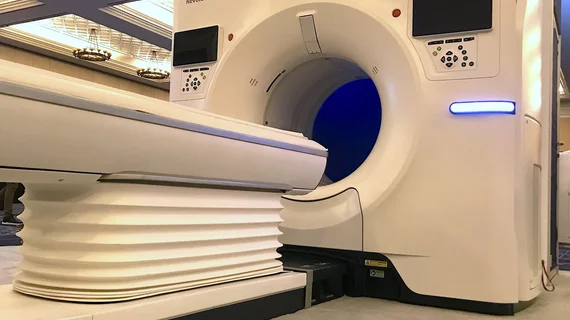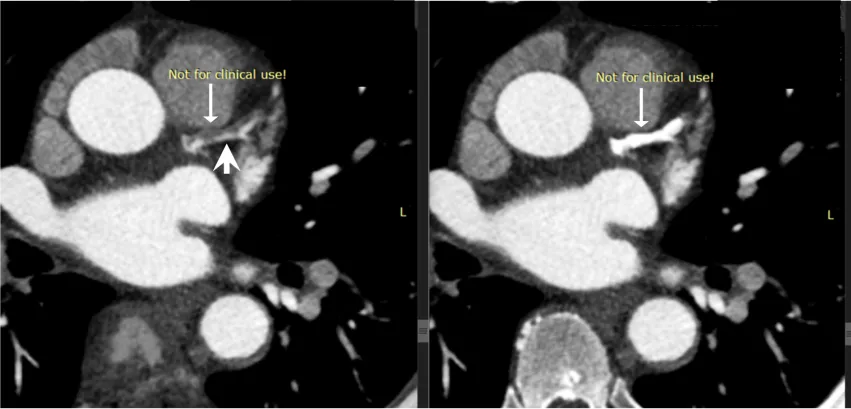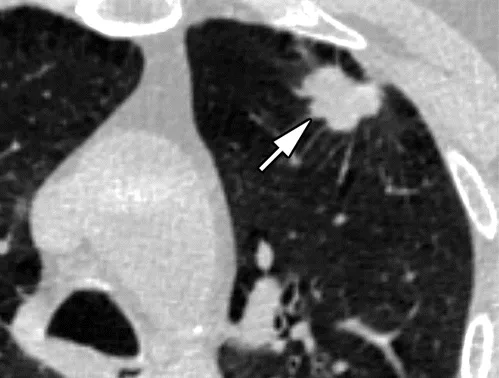Trends and new technology in computed tomography systems
Heading into the Radiological Society of North America (RSNA) 2022 meeting, Health Imaging sat down with Signify Research to find out what the key trends and new technologies are in the computed tomography market.
Bhvita Jani, research manager at Signify Research, discusses some of the new technologies to watch for in CT and on the expo floor or the annual RSNA meeting being held later in November.
Despite the COVID-19 pandemic, the CT market saw a major boost where many hospitals purchased additional systems, explained Jani. This was in part due to increasing their imaging capability during strict sterilization protocols of the CT room between patients, which limited patient throughput. It was also because many hospitals, especially outside the U.S., used CT to diagnose COVID and monitor patient progress.
"Certain countries saw a much larger uptick in demand, such as China, Western Europe, other parts of Asia. But other countries like the United States, had an adequate install base to deal with the related COVID-19 demand," Jani said.
She said the CT market rose from about $4.1 billion in 2019 to $5.1 billion in 2020.
"CT is definitely a high-growth modality because we are seeing this universal shift in medical imaging to 3D imaging due its advanced clinical capabilities," Jani explained.
She highlights some of these new advanced CT technologies in the following sections.
Technology is moving to photon-counting and spectral CT
"Photon-counting is a real game-changer in the CT market," Jani said. "We are expecting to see a lot more traction in this area over the next few years."
She noted Siemens introduced the first commercialized system in 2021, and that several other vendors have systems in development that will likely see market clearance in the next couple years. But like a lot of new technologies, the first system on the market is largely seeing purchases by larger academic research centers.
Photon-counting CT technology greatly enhances image quality, improves tissue characterization and reduces the amount of contrast and radiation doses needed. Photon-counting also bins the photons detected by different kV energies, making all scans inherently spectral CT scans. This allows the radiologist to view images at different kV levels to bring out different features in the images, rather than scanning patients multiple times with different protocols. Elements like iodine, calcium, metals and the make up of uric acid also can be enhanced or dialed out of images to reduce or eliminate calcium deposits inside vessels, bone removal, virtual removal of metal implants or their usually image artifacts, and creating non-contrast images from contrast CT exams. This also can help better visualize small kidney stones, or iodine perfusion in issues such as cardiac ischemia, stroke and pulmonary embolism.
She said spectral CT, or dual-energy CT, systems have been around for more than a decade, but the extra costs and additional steps in workflow have not helped in wide adoption. All the primary CT vendors in the U.S. now offer CT systems with built in spectral capabilities, but if the market moves to photon-counting systems, the spectral benefits will be built into every scan.
Conventional CT systems moving toward high-slice systems in U.S. and Europe
Just over a decade ago, the CT market in developed countries moved to replacing older CT systems with 64-slice scanners. Now that these systems are reaching replacement age, Jani said many are being replaced by higher slice systems with improved image quality and larger fields of view.
"In developed markets there is that shift to higher slice systems, such as 128 to 160 slices. In the U.S. and Western Europe, she said even high slice systems, 256 and above, are seeing more uptake.
Countries that are seeking mid-range 64-slice systems include Africa, Russia, Saudi Arabia, Vietnam and Pakistan.
Developing markets such as India, most of the Middle East and Latin America are still looking for 16 slice CT systems because they can be purchased at a lower price point, Jani explained.
An example of a lung cancer found using low-dose computed tomography (LDCT). Image courtesy of RSNA
Lung CT screening programs are helping drive demand for scanners
As low-dose CT lung screening programs see more reimbursement and implementation, Jani said this is helping drive CT growth. Many centers use short scan time LDCT lung and cardiac calcium scoring exams as a way to fill smaller holes in CT scanner scheduling to bring in additional revenue and catch patients who need high levels of care within a health system. This has been seen in the U.S., and more recently in France, Jani said.
Artificial intelligence adoption in CT imaging
Jani said another technology to see a lot of adoption is artificial intelligence (AI) in a variety of CT applications. This includes use for smart scheduling, automating CT protocols, new types of image reconstruction that provide higher image quality, speeding up workflows, image analysis and auto quantification. AI is also being used on the scanners to help better position the patient on the table to reduce the number of retakes.
"One thing we saw a lot of last year at RSNA 2021 was AI being used for smart protocoling or protocol suggestion. This means the system looks at the specific patient characteristics and scan dynamic factors are incorporated into the protocol to help reduce the scan time, and sometimes for contrast use as well," she explained.
Overall, radiology everywhere is facing serious shortages of qualified technologists and radiologists, and that issue has been complicated by the "great resignation" over the past year where many people are leaving their jobs, largely due to burnout during the COVID pandemic. This has led to hospitals looking for ways to help augment the staff they have and enable them to work faster and smarter. Jani said AI is helping them accomplish these goals.
Cold-cathode CT technology is on the horizon
One of the big engineering issues with X-ray tubes used in digital radiography (DR), angiography and CT systems is that the X-rays produced by a tube are only a small percentage of the energy released, and most is actually released as heat. This is why X-ray imaging systems need cooling systems, active liquid or passive radiant cooling designs such as using heavier materials that can stand up to the large amount of heat. These cooling systems add a lot of weight and extra structural supports, making systems heavier and more expensive.
Development of cold-cathode X-ray tubes has been proposed as a solution to greatly reduce the weight and materials that go into CT and other X-ray based systems. Jani said this would also greatly reduce the size and cost of these systems, in addition to making them easier to maintain.
"There have recently been advances in cold X-ray sources, such as using carbon nanotubes. Cold X-ray sources could be a major game-changer because they are lighter, smaller, faster and cheaper than traditional X-ray sources. And the way medical imaging is going, where is it being used more outside of traditional inpatient facilities and hospital settings, if this technology does take off, it could provide growth in that out-of-hospital segment," Jani explained.



